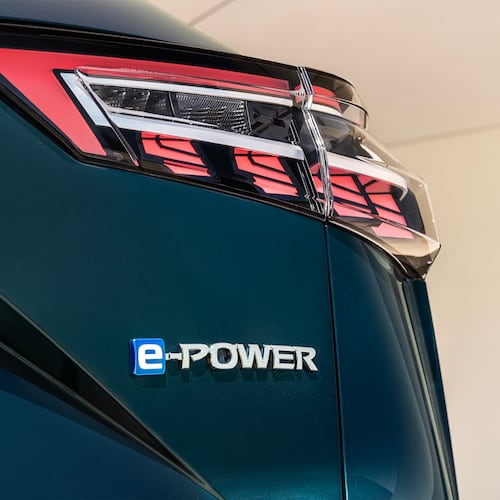Call them signs of the times: “Rent Me” messages have popped up on many of the billboards around the state, advertising tough times in yet another old-line industry.
The worst drop-off in advertising in decades is forcing billboard operators from industry giants to mom-and-pop owners to cut both their rates and expenses to stem mounting losses from vacant billboards.
In some cases that has meant cutting staff, closing down billboards in less profitable locations and delaying plans to switch to high-tech digital displays.
For some billboard companies, “it can be a make or break time,” said Toon van Beeck, a New Jersey-based industry analyst.
Much like newspapers, broadcasters, magazines and other traditional media, outdoor advertising companies have been hit by the one-two punch of the recession plus advertisers’ continued migration to online media.
Laura Martin, an industry analyst with Soleil Securities in New York, said that for such companies, it’s the worst economy in 30 years.
She expects billboard companies’ revenues to drop about 15 percent this year as they deal with vacancy rates approaching 30 percent for the big 14-by-48-foot billboards along highways.
Breaking even at best
For Robert Allen, the vacancy rate could soon approach 50 percent.
Allen owns four billboards on I-85 near Newnan. He’s seeking a new tenant for one of his signs because the local restaurant that had been renting it didn’t renew its contract in July.
A second billboard will go dark at the end of this month, he said. “The reason you see some of the empty ones right now is because the restaurants are taking a big hit,” he said.
With the loss of the second customer and the cost of insuring his nearly 100-foot-tall signs, which cost about $200,000 each to install, he’ll barely be breaking even, he said.
At least he’s doing better than some of the largest companies in the business, which are reporting huge losses.
The parent company of San Antonio-based Clear Channel Communications, the nation’s largest billboard operator and radio broadcaster, reported a $3.7 billion loss in the second quarter after writing off $4 billion worth of billboard permits, radio station licenses and goodwill from acquisitions. Clear Channel’s billboard and radio businesses both saw revenue declines of 20 percent or more compared to a year earlier.
Likewise, Baton Rouge-based Lamar Advertising, the nation’s third-largest billboard operator, said it has closed 1,800 billboards and other types of smaller signs as a cost-saving measure.
Lamar recently reported an $11.8 million loss in the second quarter after seeing its revenue dip 15 percent compared to a year earlier, to $275 million. The company had a year-earlier profit of $12.6 million.
Cutbacks, consolidation
Lamar and Clear Channel, along with CBS Corp., number two in the industry, own hundreds of billboards in Georgia.
Clear Channel and some other companies likely will have to take “some serious actions” to deal with a shrinking advertising market, which might not begin to recover until the second half of next year, said van Beeck, a senior industry analyst with industrial market research firm IBISWorld.
Besides cutting their own sales staff and direct advertising costs, he said billboard companies are likely to consolidate through mergers and acquisitions, especially among mid-sized companies.
He expects the ongoing switch to electronic billboards — the only major growth area in the mature industry — to continue as well, but at a slower pace, because fewer companies now have access to cash or loans.
Allen said he has shelved any dreams of converting any of his four I-85 billboards to high-tech displays. Those signs would cost twice as much as his conventional billboards but allow him to rent to multiple customers at once.
“I’m thinking, the bank is not loaning any money on anything like that, so you can kiss that goodbye,” he said.
Restrictions growing
Even as revenues fall, billboard companies are also running into resistance to the newer electronic signs in some states and communities, which view them as a nuisance and a traffic hazard. Many local and state governments have opposed new conventional billboards as well, including Fulton County and the cities of Milton, Johns Creek and Dunwoody.
A few states — Vermont, Hawaii, Maine and Alaska — prohibit both electronic and conventional billboards. Knoxville banned new installations of the luminous billboards last year. Even laissez-faire Houston and Los Angeles have tightened their billboard rules.
Clear Channel sued Roswell after it demanded the removal of a billboard on Holcomb Bridge Road that the company converted last year to an electronic sign.
Last week, the Cobb County Commission voted to ban new LCD-style signs in residential areas that flash or contain animation, after a church asked to install one. The commission voted to allow electronic billboards along highways in commercial and unincorporated areas — as long as they aren’t too close together and owners take down three old billboards for each new electronic sign.
The move was similar to an ordinance Marietta adopted this year requiring companies to tear down two billboards for each electronic billboard they erect on I-75.
About the Author
Keep Reading
The Latest
Featured

